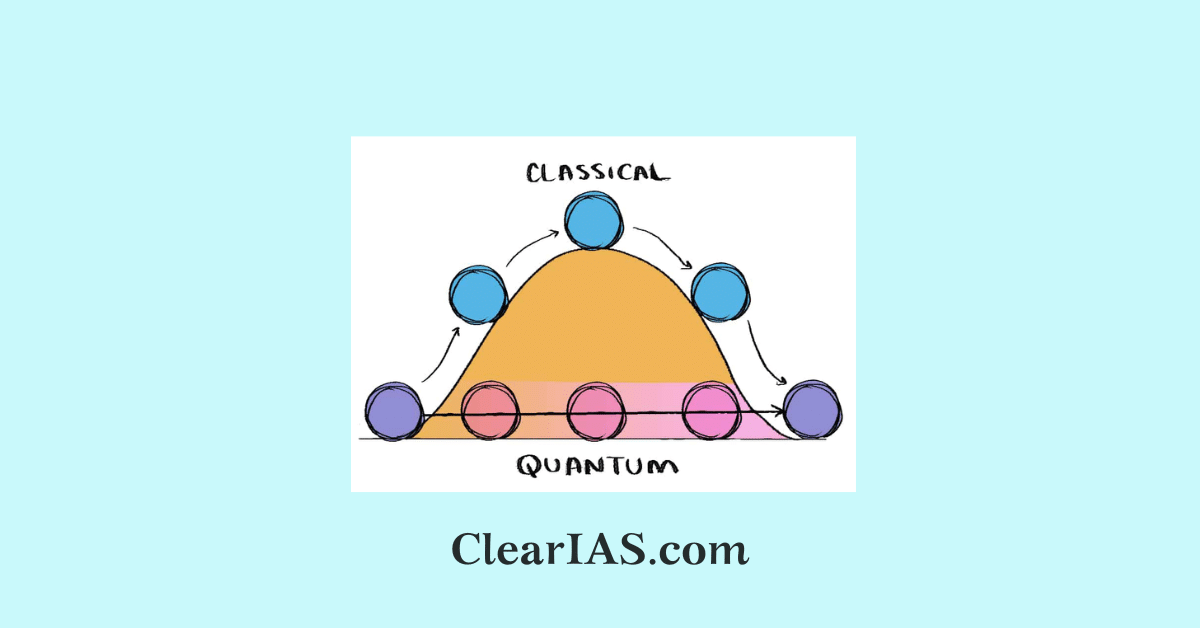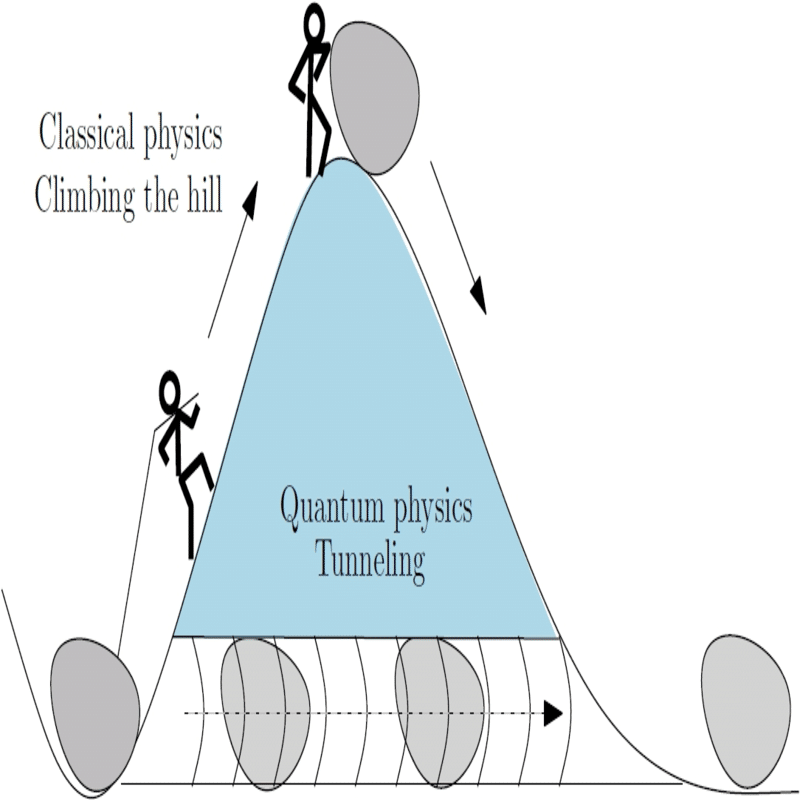
Macroscopic Quantum Tunnelling has been awarded the Nobel Prize in Physics 2025. Macroscopic Quantum Tunnelling (MQT) is a phenomenon in which an entire macroscopic system, comprising a large number of particles, exhibits quantum mechanical behaviour, such as tunnelling through an energy barrier, which is normally expected only for individual atoms or subatomic particles. Read here to learn more.
The 2025 Nobel Prize in Physics has been awarded to John Clarke, Michel Devoret, and John Martinis for demonstrating that quantum tunnelling, a phenomenon once thought to be confined to subatomic particles, can also occur in macroscopic electrical circuits made of superconductors.
Their pioneering work has laid the foundation for the emerging field of quantum circuitry, a cornerstone for technologies such as quantum computers, ultrasensitive detectors, and precision measurement systems.
Quantum Tunnelling: From Atoms to Circuits
Quantum mechanics allows particles to occasionally cross potential barriers they lack the energy to surmount, an effect known as tunnelling.
It’s as if a particle, instead of climbing over a mountain, tunnels through it. This behaviour, fundamental to nuclear decay and electronic devices like tunnel diodes, was long considered exclusive to microscopic systems.
Clarke, Devoret, and Martinis extended this concept to the macroscopic world.
Using superconducting circuits, they showed that entire electrical systems could exhibit quantum behaviour, including energy quantisation and quantum tunnelling, typically reserved for subatomic particles.
What is Macroscopic Quantum Tunnelling (MQT)?

Traditionally, quantum effects occur at the subatomic scale.
The laureates demonstrated that entire macroscopic electrical systems, such as superconducting circuits, can also exhibit quantum behaviour, particularly quantum tunnelling and discrete energy levels, previously thought impossible at large scales.
Thus, macroscopic quantum tunnelling bridges the gap between quantum physics and classical electronics.
The Josephson Junction
Their experiments revolved around the Josephson junction, a structure comprising two superconductors separated by a thin insulating barrier. In this setup, quantum effects enable the flow of current without resistance, even across the insulator.
The researchers focused on the phase difference, a key quantum parameter describing the wave nature of superconducting electrons across the junction.
Through precision measurements, they found a definitive answer. The junction’s phase difference displayed quantum tunnelling between energy states and exhibited discrete energy levels, confirming that the circuit behaves like a “macroscopic quantum particle.”
Significance of the Discovery
- Bridging Scales: Proved that quantum mechanics applies not only to microscopic particles but also to engineered macroscopic systems.
- Foundations of Quantum Computing: Enabled the creation of superconducting qubits, the basic units of modern quantum computers.
- New Quantum Technologies: Supports the development of ultra-sensitive sensors, quantum communication systems, and improved measurement devices.
- Scientific Implication: Deepens understanding of the quantum-classical boundary, a central question in physics.
Impact of macroscopic quantum tunnelling
This breakthrough bridges the gap between quantum mechanics and engineering, enabling the development of practical quantum devices.
- Superconducting quantum circuits are now the building blocks of quantum computers, where quantum bits (qubits) exploit superposition and entanglement for computational power far beyond classical systems.
- Moreover, their research underpins ultra-sensitive measurement tools, such as SQUIDs (Superconducting Quantum Interference Devices), used in brain imaging, mineral exploration, and astrophysical observations.
Applications
- Quantum Computing: Superconducting qubits, like those used by IBM, Google, and others, are based on Josephson junctions.
- Quantum Sensors: Enhanced precision in detecting electromagnetic fields and gravitational waves.
- Quantum Information Processing: Advances in manipulating and storing information at quantum levels.
- Fundamental Physics: Testing quantum coherence at macroscopic scales.
Conclusion
By bridging the microscopic and macroscopic worlds, Clarke, Devoret, and Martinis have redefined the boundaries of quantum physics.
Their discovery of quantum tunnelling in superconducting circuits not only validates the universality of quantum mechanics but also opens the door to a new technological revolution driven by quantum information science.
Read: Metal-Organic Frameworks (MOFs): Nobel Prize in Chemistry 2025







Leave a Reply